For my eleventh blog post (you guys get a bonus one- lucky you), I was essentially asked to reflect on what is the point of the Arc project and social entrepreneurship if the United Nations was fully funded. In my eyes, the UN and the Arc project/social entrepreneurship are two sides of a coin. On one side is the UN, whose job is to encourage co-operation amongst countries and bring peace and security to all. Sadly, this goal is arguably unattainable and the UN’s job becomes essentially a “janitorial” job of trying to clean up the messes all over the world. At a first glance, social entrepreneurship is essentially trying to do the same thing: make the world a better place. Where it differs is that social entrepreneurship tries to innovate and find a different solution to the problem. By extension, the Arc Project gives youth the training and the first steps that are necessary to pursue social entrepreneurship in the future. Even if UN is fully funded, they won’t be able to eliminate all the world’s problems; social entrepreneurship and the Arc project will still be necessary to help encourage people to think outside the box.
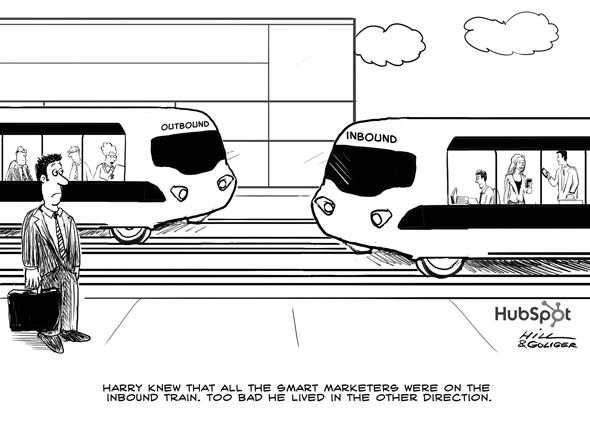
The Ingenious, Indispensable, Inclusive Incentives of Inbound Marketing
It’s been sixty-nine days since my first blog post in the beginning of the year and I feel like a lot has changed since then. Looking back, I see that in this period, many assignments have been turned in, even more midterms have been written, and most importantly, lasting friendships have been made. On this day, I’m writing my tenth blog post (milestone!) and I think it would be fitting for my tenth blog post to be about another blog. Looking online, one blog site that particularly captivated me belonged to a man named Chris Brogan, professional speaker and CEO of Owner Media Group. The first thing I noticed in his site is how clean and professional his blog looked. When reading his articles, I was impressed in how not all of his articles talked about only business, but about his life philosophies. One article that particularly impressed me talked about inbound marketing- the promotion of a company through blogs, social media, and other forms of content marketing. Reflecting on his blog, I realized he was doing the same thing; throughout all his articles, he was always subtly putting in links that led to registering for his webinars. While normally I wouldn’t sign up for these kind of things, I now considered doing it as Chris had given me so much goodwill over all the free insightful articles he had posted. Even though I haven’t tried to sell anything on my blog (yet), Chris’s opened my eyes to one of the core essences of marketing: if someone likes you, they will usually buy what you’re selling.

Air Canada or Air-Heads?
Disclaimer time: this blog post might be a bit more biased than usual as it has afflicted a member of my family. You see, a few days ago my mom flew back from Greece and had to use Air Canada instead of our usual plane company, Lufthansa. To summarize in as few words as possible, let’s just say that her experience didn’t inspire her to switch companies in the future. After her laments, I did some research and was not particularly surprised to see an article from Canada.com that said Air Canada gets the most formal complaints from any airline in Canada. According to the article, what Air Canada is mainly missing, which I believe a lot of companies are, is the ability to give competent or decent customer service. For most people, the solution would be simple: just have Air Canada give better service. To those people, I raise an important question- HOW will Air Canada give better service? Having learned about Zappos in class, I am confident that to give better service Air Canada has to not only improve its work conditions, but also cultivate fierce loyalty to the company. To do this, Air Canada would have to give intense employee training with the promise of a fun, relaxed working environment as the reward. By building a fun “culture” around its company, employees would be happier and in turn be more productive and give better service. With better service, Air Canada could really take off (I just kill it with the jokes) as a company.
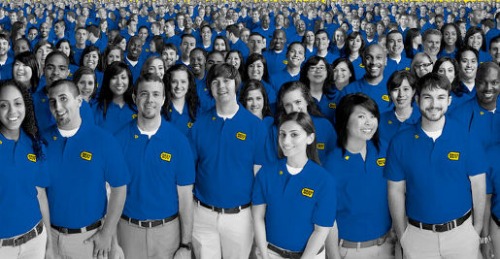
Is Best Buy Doing the Best Sell?
For the last 6 days, I have been looking at people’s blogs (finally figured out how to do it) and been greatly impressed with some of the quality posts I’ve read. If you’re reading this and are a blogger, give yourself a tap on the shoulder; many of the posts feel like they were done by professionals. One such article was written by my classmate Taha Bhopalwala, who said that Best Buy is currently going downhill due to poor inventory management, sales forecasting, and inability to evolve with the industry. Having learned many things from our class on performance management and BTM, I personally believe Best Buy is deteriorating because the company is rewarding performance that goes against its own goals. This is due to the fact that Best Buy is not paying its workers by commission and is instead paying them a flat rate. In my eyes, this results in a loss of incentive for the worker as they would lose the urge to make that extra sale. After all, why would anyone go the extra mile if they will be paid the same fixed rate regardless of how great a job they are doing? To get out of their rut, I believe that Best Buy should give its employees commission-based salaries which would in turn lead to better customer service and more profit.
Entrepra-NEW Opinion!!

Looking back at the past fifteen (!) classes, I have been amazed at how far I’ve come in the course. Even though I still find some things hard to grasp (looking at you, future and present values), it feels great to look at articles and interpret them with the tools I have learned in class. This happened to me recently when I took a look at an excellent blog post written by my classmate, Isabella Bonato.
In her article, Isabella expressed the opinion that society should not put generic standards on successful CEOs and their workplaces, as people like Steve Jobs have proved that it’s rewarding to not always share the same qualities. Having learned about disruptive innovation and entrepreneurship in class, I would like to voice my opinion regarding the qualities of a CEO. In my opinion, a successful CEO has to be an entrepreneur, someone who started at the bottom and through disruptive innovation pushed his way up to the top (good examples are Mark Zuckerberg with Facebook and Steve Jobs with the Iphone). What makes CEOs achieve is that they have a long-term vision that they are able to carry through in the long run.
Is this a real innovation?
While I agree that society shouldn’t place physical traits as guidelines for a great CEO I still believe that society should place some common characteristics on them. Additionally, CEO’s should be cautious to hire legitimate intapreneurs for their company- people who innovate for the company’s value, not just in the sake of innovation (*cough* New Coke). With a driven CEO and a team of like-minded innovators behind him, businesses can be truly successful.

Netflix- The Consumer’s Choice?
Apologies for the long delay between blog posts- between family emergencies (grandpa passed away) and being stuck in the heat of midterms, I had no time to write anything for the last two weeks. Thankfully, things are better now and I can finally continue blogging once again. To kick things off, I would like to express my opinion on an article found in the Daily Finance which stated that Netflix didn’t meet its own growth expectations due to a price hike in its services. While it most likely won’t affect the company in the long-run, I find it worrisome that Netflix didn’t know in advance about the effects the price hike would have on its sales. Having learned about market research in class, I believe that it should have been essential for Netflix to gather some primary data and survey people from different socioeconomic backgrounds regarding their opinions to the price hike. One mistake I’m guessing Netflix most likely made in their research was asking the wrong questions to the consumers; instead of asking the consumers directly how they would feel about a small price increase, they probably asked “garbage questions”, such as how the consumer currently feels about Netflix. This mistake also stretches to the marketing itself, which should have given a justification for the price increase (ie. Netflix is now producing quality movies and tv shows) instead of expecting consumers to not care that it would be more expensive. In the future, more effort should be put by Netflix into its market research if they don’t want to see a drop in consumers.
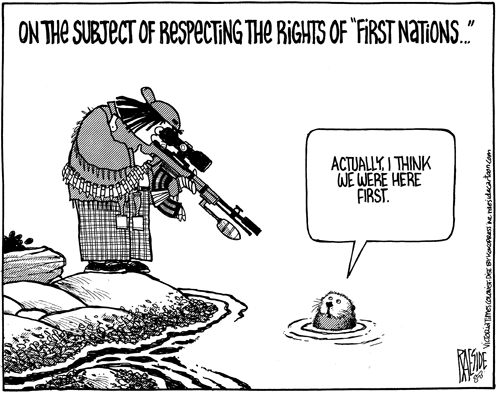
Picking a Side
One of my personal philosophies when faced with a conflict is to try and look at it from the opposing viewpoint’s perspective. In this way, you can empathise with your competition and look to see if they have any valid reasons to be against you. In reading one of the optional Vancouver Sun readings, I can see how businesses are worried with the movement to share revenue with the Natives. In addition, they might not want to have the Natives regain the land where their factories are. On the other hand, I empathise with the Natives who have had their land taken from them and simply want it back. In my opinion, I believe that businesses should be able to keep the land with some form of compensation for the natives. What happened to the natives was wrong, however it happened many years ago and today’s society shouldn’t be punished for the mistakes of the past. Having learned about shared value in class, I suggest that businesses focus on integrating the aboriginal people (their current obstacle) into their business plan. In this way, they can provide aboriginal people with employment opportunities while eliminating the external factor of land claim. Additionally, they can hire Aboriginal people as “environmental and land consultants” which would further their shared value. Instead of fighting with the Aboriginal people, it would be more beneficial for both parties to simply cooperate.
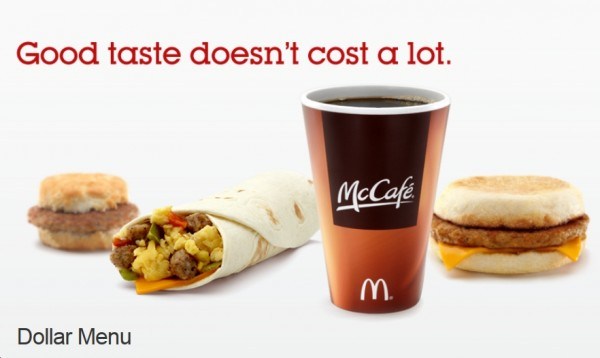
Holy Guacamole!!
Confession time: when I wrote my first blog post, I thought this was a really tedious assignment that was going to be torture all the way through. Nevertheless, I have to say that I’ve reached my 4th blog post and I’ve been reading more articles than ever before and it’s been kind of (gasp!) fun. Anyways, getting down to business, (pun intended) one interesting article I read recently in the Daily Finance says that McDonalds is trying to add guacamole to its menu in an attempt to sway customers from Chipotle. To the untrained eye, this would seem like a great decision as McDonalds is trying to win back customers by giving them what they want. However, having learned about positioning has given me the insight to realise that what McDonalds is doing is a bad idea. Chipotle has established themselves as the leader of the guacamole market; by McDonalds trying to establish themselves as the leader, they will have to exert a lot of time and money. In addition, McDonalds will probably give the consumer information overload and confuse them about what the brand is about. In order to reorient themselves, I believe McDonalds should stop trying to appeal to everyone and focus on the direction that has been working for them: fast-food burgers. This is not the first time McDonalds has tried to branch out (anyone remember the Mcpizza?) and nor will it be the last. Sometime, McDonalds will have to realise that it’s good to focus on your strengths and not always a good idea to try and give the consumer everything.
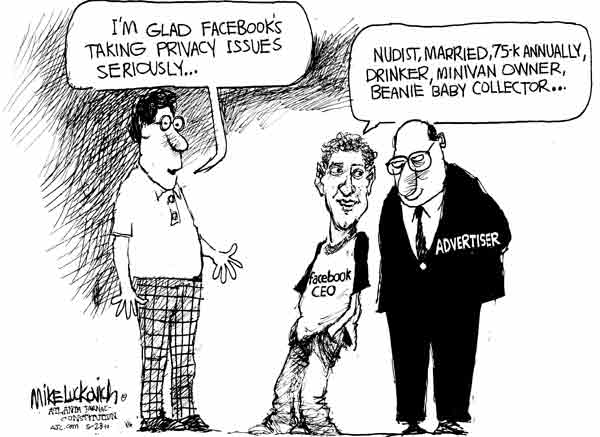
The Social Network
In my Comm 101 class, we have been told multiple times (and probably will be told many more) to take concepts we learned from class and try to analyse current events through those lens. So far, I have found this to be quite difficult until today when I found an article in CBC talking about an emerging social network called Ello that is aspiring to become a Facebook and Twitter alternative. In a nutshell, Ello’s claim to fame is that they’ll be ad-free compared to competitors and that personal information won’t be sold to third parties in the name of advertising. Having learned of Porter’s generic strategies in class, I can now appreciate what Ello’s trying to do. By using a differentiation strategy, Ello is hoping that its unique attributes (ad-free and privacy) will separate itself from the competition in a way that consumers will like. Personally, the only problem I see coming in Ello’s way is the cost. Currently, Ello is offering a free service that encourages users to donate. However, as Ello’s user base expands, I do not see them getting by without having to install a freemium model or making consumers pay money upfront to access the service. Ello has a great concept; the question is how they will apply it in the future to ensure its success.

The Business Bug
As some of you in one of my classes might have noticed, I have been sick the last week and a half with a nasty little bug that the doctor called viral pneumonia. The illness hasn’t been particularly fun, but the good news is that it inspired me about what my next blog post should be. From an article in Canadian Business, I learned that there was an expensive drug called “biologic” which two companies wanted to ban other companies from selling for the reason of “protecting the consumer”. To me, what the two companies are trying to do is completely wrong and horrible for business in the long run. By trying to ban other companies, they are in effect making a monopoly on the product which would allow them to control the prices however they please. In turn, people who potentially need the medicine would not be able to afford it due to the high profits and could potentially die, which would be completely immoral and go against business ethics. Also, without any competition, the companies would stagnate creatively and there would most likely be no future breakthrough for that medicine. In the interest of human lives and the market the two companies should back off from their bills.
